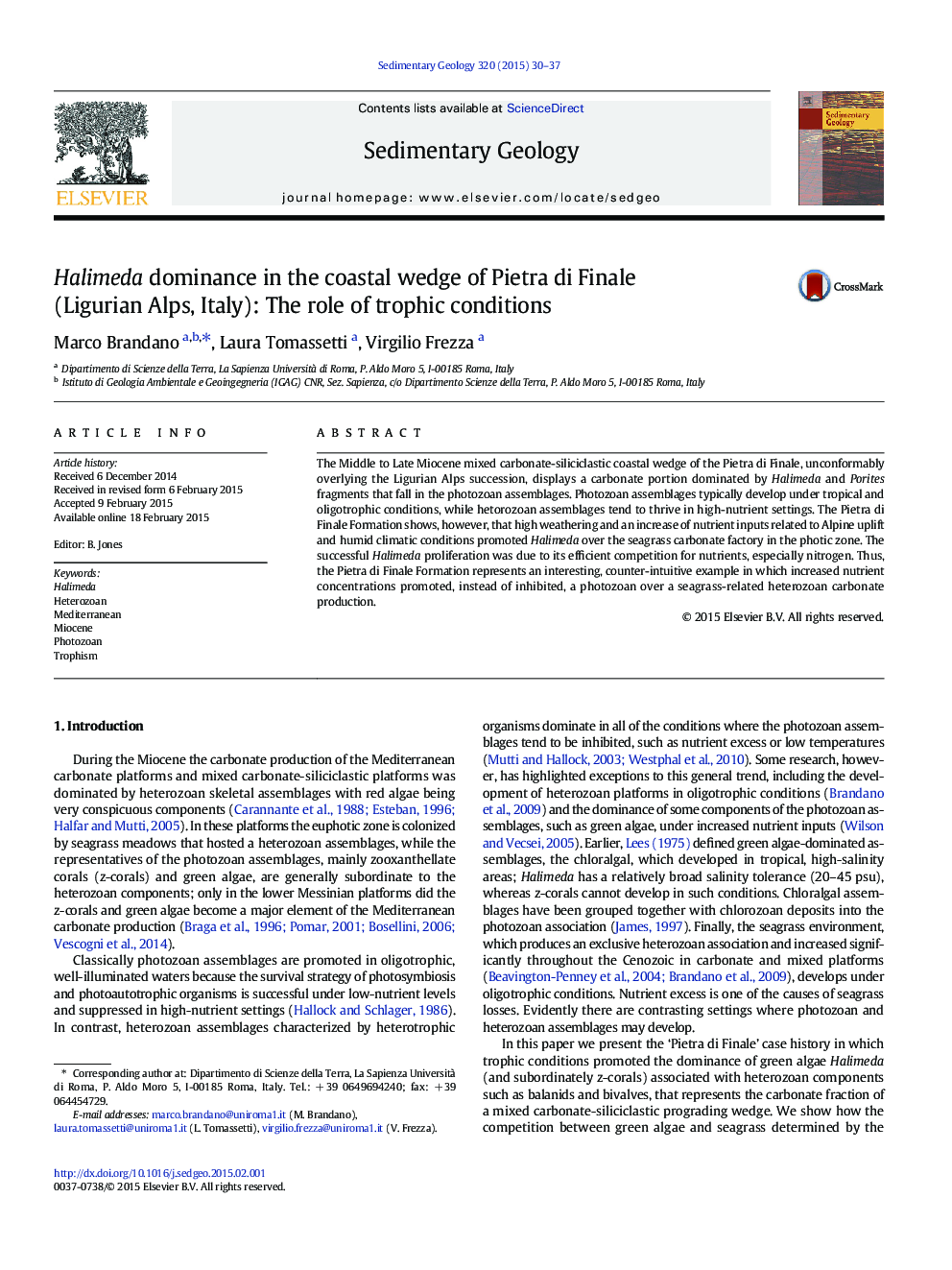| کد مقاله | کد نشریه | سال انتشار | مقاله انگلیسی | نسخه تمام متن |
|---|---|---|---|---|
| 4689243 | 1636043 | 2015 | 8 صفحه PDF | دانلود رایگان |

The Middle to Late Miocene mixed carbonate-siliciclastic coastal wedge of the Pietra di Finale, unconformably overlying the Ligurian Alps succession, displays a carbonate portion dominated by Halimeda and Porites fragments that fall in the photozoan assemblages. Photozoan assemblages typically develop under tropical and oligotrophic conditions, while hetorozoan assemblages tend to thrive in high-nutrient settings. The Pietra di Finale Formation shows, however, that high weathering and an increase of nutrient inputs related to Alpine uplift and humid climatic conditions promoted Halimeda over the seagrass carbonate factory in the photic zone. The successful Halimeda proliferation was due to its efficient competition for nutrients, especially nitrogen. Thus, the Pietra di Finale Formation represents an interesting, counter-intuitive example in which increased nutrient concentrations promoted, instead of inhibited, a photozoan over a seagrass-related heterozoan carbonate production.
Journal: Sedimentary Geology - Volume 320, 1 May 2015, Pages 30–37